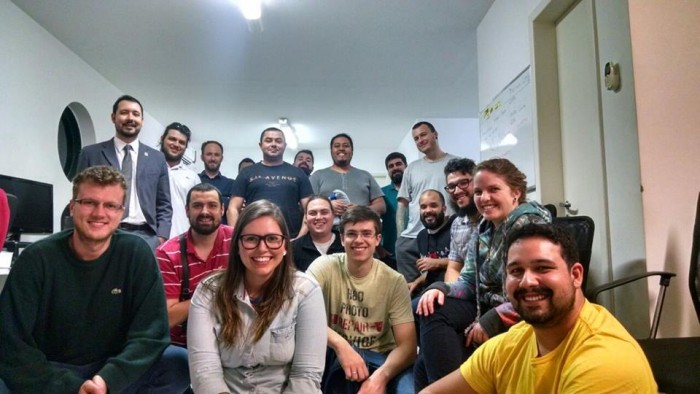Agile Design - Improving Product Advancement for Faster Outcomes
페이지 정보
작성자 Dorthea 작성일24-11-22 13:19 조회8회 댓글0건관련링크
본문
Intro
Agile Layout is transforming the method teams develop, examination, and release products. Incorporating agile technique with design thinking, Agile Style supplies a flexible and iterative strategy that allows groups to react swiftly to market shifts, include individual responses, and constantly boost product high quality. As organizations increasingly aim for a much faster time-to-market and a far better user experience, Agile Layout has actually arised as an important strategy.
 What is Agile Layout?
What is Agile Layout?
At its core, Agile Style is the blend of nimble growth principles with user-centered style techniques. Agile Style eventually leads to an item that meets users' requirements much more properly.
Trick Principles of Agile Style
User-Centric Approach: Agile Style puts users at the. By continually screening and refining based on responses, designers make certain the item lines up with real-world user assumptions and requirements.
Cooperation: Agile Design stresses synergy, damaging down silos and motivating close cooperation in between designers, developers, and stakeholders. This enhances communication and ensures that each employee's understandings educate design options.
Iterative Growth: Agile design team collaboration Layout counts on iterative cycles-- brief, focused sprints of job that lead to fast models and fast screening. This makes it possible for groups to identify and fix issues early, boosting both rate and quality.
Versatility: Agile Design adjusts to changing requirements throughout the project. Teams prioritize adaptability, readjusting as customer demands advance or market problems change.
Benefits of Agile Style
Agile Layout provides several key benefits. It increases time-to-market by producing room for quick changes, reduces thrown away resources, and reduces the threat of supplying a product that disappoints user assumptions. Furthermore, Agile Style fosters a society of versatility, making it simpler for teams to pivot as brand-new insights emerge.
Implementing Agile Design
To execute Agile Style, begin by breaking down the style procedure right into sprints, establishing clear purposes for each stage. Foster a culture of cross-functional cooperation by urging interaction in between all included groups. Consistently test designs with real users to make certain that the product remains straightened with advancing requirements.
Incorporating active method with layout reasoning, Agile Design uses an adaptable and repetitive strategy that enables teams to respond rapidly to market changes, integrate customer comments, and continuously enhance item quality. At its core, Agile Layout is the blend of agile advancement principles with user-centered design techniques. Agile Layout ultimately leads to an item that meets customers' demands a lot more effectively.
To apply Agile Design, start by damaging down the design process right into sprints, setting clear objectives for each stage.
Agile Layout is transforming the method teams develop, examination, and release products. Incorporating agile technique with design thinking, Agile Style supplies a flexible and iterative strategy that allows groups to react swiftly to market shifts, include individual responses, and constantly boost product high quality. As organizations increasingly aim for a much faster time-to-market and a far better user experience, Agile Layout has actually arised as an important strategy.
 What is Agile Layout?
What is Agile Layout?At its core, Agile Style is the blend of nimble growth principles with user-centered style techniques. Agile Style eventually leads to an item that meets users' requirements much more properly.
Trick Principles of Agile Style
User-Centric Approach: Agile Style puts users at the. By continually screening and refining based on responses, designers make certain the item lines up with real-world user assumptions and requirements.
Cooperation: Agile Design stresses synergy, damaging down silos and motivating close cooperation in between designers, developers, and stakeholders. This enhances communication and ensures that each employee's understandings educate design options.
Iterative Growth: Agile design team collaboration Layout counts on iterative cycles-- brief, focused sprints of job that lead to fast models and fast screening. This makes it possible for groups to identify and fix issues early, boosting both rate and quality.
Versatility: Agile Design adjusts to changing requirements throughout the project. Teams prioritize adaptability, readjusting as customer demands advance or market problems change.
Benefits of Agile Style
Agile Layout provides several key benefits. It increases time-to-market by producing room for quick changes, reduces thrown away resources, and reduces the threat of supplying a product that disappoints user assumptions. Furthermore, Agile Style fosters a society of versatility, making it simpler for teams to pivot as brand-new insights emerge.
Implementing Agile Design
To execute Agile Style, begin by breaking down the style procedure right into sprints, establishing clear purposes for each stage. Foster a culture of cross-functional cooperation by urging interaction in between all included groups. Consistently test designs with real users to make certain that the product remains straightened with advancing requirements.
Incorporating active method with layout reasoning, Agile Design uses an adaptable and repetitive strategy that enables teams to respond rapidly to market changes, integrate customer comments, and continuously enhance item quality. At its core, Agile Layout is the blend of agile advancement principles with user-centered design techniques. Agile Layout ultimately leads to an item that meets customers' demands a lot more effectively.
To apply Agile Design, start by damaging down the design process right into sprints, setting clear objectives for each stage.
댓글목록
등록된 댓글이 없습니다.